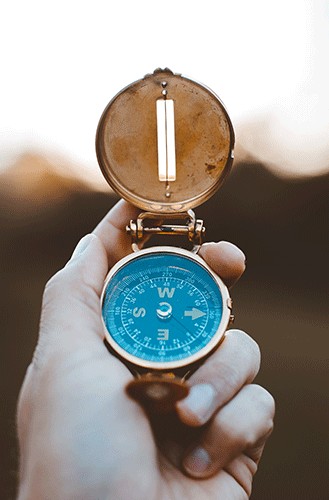For an enjoyable and safe hiking, that even beginners can do, we need some equipment that will make it easier for us to adapt to nature. The first of these equipment should be clothing that will keep us fresh and dry throughout the walk for the health of our body.
Essentials of a Safe Hiking
If our water resistant, breathable, UV protected, durable fabric clothes are ready, how should our backpack, which is our second important equipment, be?
A lightweight, multi-pocket waterproof backpack with a soft waist support belt that grips our body, the shoulder straps are comfortable, will be suitable for safe hiking.
We must wear waterproof and hard soled boots with high ankles, enabling air exchange during a safe hiking. Shoes should not be too tight or too big. Breathable shoes don’t let your feet sweat and your feet always stay dry. Feet that do not sweat do not get cold and do not bother you during the walk. In addition, the outsole of the shoe must have a Vibram or Contagrip sole, which provides good grip in nature. It helps prevent unwanted slippage.
Using a walking pole helps us keep our balance while walking, distributes some of the load we carry to our arms and helps reduce the load on our knees. Walking poles also provide great convenience in hill-slope climbing and steep descents. It can also be used as a stabilizer in case of any sprain, bone cracking or fracture.
Related store savings
The leggings, which are designed to cover the part of the shoe from the heel to the toe, starting from just below the knee, provide great convenience to the hikers. Wet bushes prevent wetting of trousers and snow, mud and insects from entering the shoes when passing through muddy lands. If you are traveling on an unfamiliar terrain, you should have a pair of leggings with you.
In order to easily adapt to suddenly changing weather conditions, we must definitely put spare clothes on our bag and of course it should be with us in a light raincoat.
Although it is possible to come across water sources while safe hiking, we must have a flask to meet the need for at least 1 liter of water. If we want our water to be always ice-cold and fresh, we need a good thermos.
Fruits and nuts should be light and energizing with you. We should always carry a small first aid kit for walking poles, string, leggings, pocket knife, whistle, GPS / compass, radio, handheld ham radio, match or lighter, lantern + head lamp, spare batteries, insecticide and minor injuries.
Hiking is a fun activity, but if we do not have enough information and take the necessary precautions, we may encounter dangerous situations.
Wild animals (wild boars, wolves, bears, foxes, snakes) move away when they notice people in nature, and if we ignore them, they will not follow us. If we are not in the area with their offspring, we will not pose a threat to them. But if we are in the area with their offspring, they may be aggressive towards us.
If you have an open wound, the jackals that follow the smell of blood will follow you and wait for you to get tired. They will not leave you for a moment. So we shouldn’t go safe hiking alone. In such a case, we must definitely inform one of our relatives about our walking plan.
Related guest article

If we want to go safe hiking in an area that we have not visited and do not know before, we should search the internet for that region and get geographic information about the region before we go. And there must be a GPS-supported clock, GPS device, application-supported devices that enable us to find a map or direction that shows the point we want to reach and the route we will follow.
Safety
In rural areas far from the city center, there may be areas where mobile phones do not have signals. However, we must have our mobile phones with us in order to inform us in emergency situations and to benefit from other features.
Important phones can be forgotten in case of emergency or panic. Do not forget to write down the numbers of the institutions you have determined such as First Responders, Fire Department or Ambulance on a piece of paper.
All you can do in case of a possible loss is to stay calm and move to a point your phone or radio will pull. As we mentioned above, your relative or institution that you notified before going for a safe hiking will start searching for you if you do not return at the time and date you set.
If the final checks are complete, it’s time to set the route and hit the road! We wish you happy safe hiking!
Related Articles
- Keeping the momentum: A hiker’s diary
- Emily Harrington: 1st Woman to Free-climb El Capitan’s Golden Gate Route in Less Than 24 hours
- Outdoor Clothing Guide: What to Consider when Choosing?
- Sports Direct: A to Z Sporting Goods
- Choosing Sneakers: 7 Important Things to Consider
- Essential Tips to Help You Prepare For a Hiking Trip
“In every walk in with nature one receives far more than he seeks.”
― John Muir

Leave a Reply